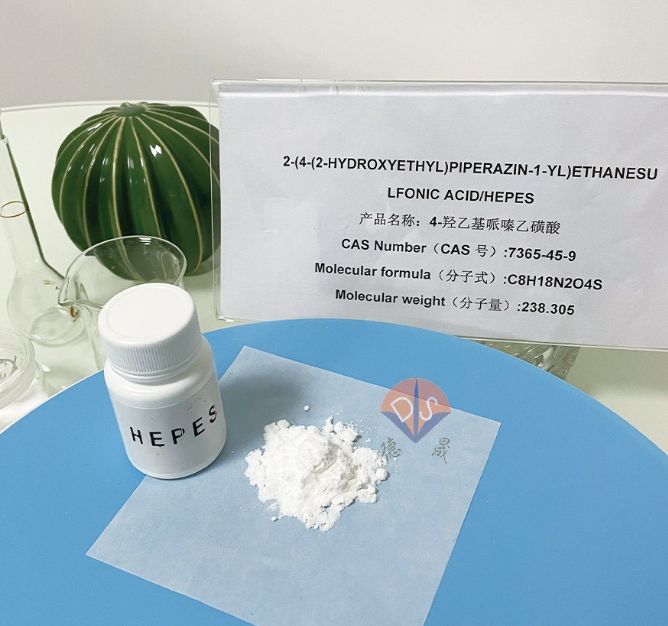Comprehensively understand the scientific research value of HEPES from its characteristics to applications
Release time:
2025-07-13
In the field of biological science research, every experiment is like a precise exploration, and in this process, various reagents and buffering agents are like equipment for explorers, indispensable. Today, we are going to introduce such an 'invisible guardian' - HEPES buffer.

HEPES powder
Characteristics of HEPES: excellent water solubility
HEPES, The full chemical name is N - (2-hydroxyethyl) piperazine ethanesulfonic acid, which is a zwitterionic biological buffering agent that plays a crucial role in biological experiments. At room temperature, it exists in the form of a white powder, and HEPES has excellent water solubility. At 20 ℃, 40 grams of HEPES can be fully dissolved in 100 milliliters of pure water. This means that when used, the operation is extremely simple, just dissolve it in water. This simple preparation process provides great convenience for biological experiments and reduces the errors that may be introduced in the operation steps.
Sterilization treatment: flexible and reliable operational guarantee
The sterilization methods of HEPES are diverse, and their powder form is resistant to high temperatures with a melting point of up to 200 ℃. This makes high-pressure sterilization (high-temperature and high-pressure treatment) a commonly used and effective sterilization method that does not cause degradation. In addition, for HEPES buffer that has already been prepared into a solution, a 0.2 micron needle filter can also be used for filtration. This method of providing multiple options provides strong guarantees for the smooth progress of experiments. Researchers can choose appropriate sterilization methods according to specific experimental needs without worrying too much about bacterial contamination.
Storage precautions: Avoid the influence of light on experimental results
When using HEPES, attention should be paid to the impact of storage conditions on experimental results. According to relevant literature reports, if HEPES aqueous solution is exposed to ambient light for more than 3 hours, it may produce cytotoxic hydrogen peroxide (H ₂ O ₂). Therefore, in order to avoid the potential harmful substances from affecting the experimental results, HEPES aqueous solution must be stored away from light. This storage requirement is an important prerequisite for ensuring the stability of HEPES buffer performance and not interfering with subsequent experimental steps.
Widely used: maintaining pH stability in experimental systems
In biological experiments, HEPES has a wide range of applications. It can play a crucial role in various fields such as cell culture, enzymatic research, and protein analysis. Its core function is to maintain the stability of the pH value in the experimental system. HEPES creates a suitable space for the normal activity of biomolecules by buffering the acid-base changes generated during cellular metabolism or maintaining a constant pH environment in enzymatic reactions. Without effective buffering by HEPES, cells may not grow normally due to pH fluctuations, enzyme activity may be affected, and experimental results may become unpredictable.

Product packaging
With the continuous development of biological science, the demand for high-quality reagents and biological buffering agents is increasing day by day. And Desheng New Materials is precisely such a company that focuses on providing diagnostic reagent raw materials. Desheng New Materials understands the needs of researchers and is committed to developing and producing high-quality HEPES products. Their HEPES not only have high purity and stable performance, but are also highly praised by customers. Choosing HEPES from Desheng New Materials can provide you with reliable support, making your research journey more secure and smooth.
Previous page
Previous page
News
Contact details
Contact number
Address: C8, Guanggu United Science and Technology City, Ezhou City, Hubei Province
Fax:0711-3704 589
Follow us



